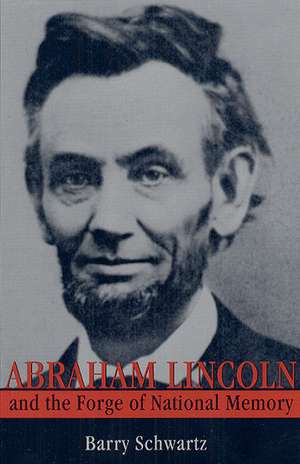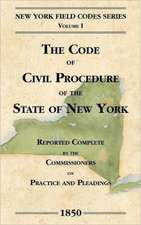Abraham Lincoln and the Forge of National Memory
Autor Barry Schwartzen Limba Engleză Paperback – 15 sep 2003
Abraham Lincoln has long dominated the pantheon of American presidents. From his lavish memorial in Washington and immortalization on Mount Rushmore, one might assume he was a national hero rather than a controversial president who came close to losing his 1864 bid for reelection. In Abraham Lincoln and the Forge of National Memory, Barry Schwartz aims at these contradictions in his study of Lincoln's reputation, from the president's death through the industrial revolution to his apotheosis during the Progressive Era and First World War.
Schwartz draws on a wide array of materials—painting and sculpture, popular magazines and school textbooks, newspapers and oratory—to examine the role that Lincoln's memory has played in American life. He explains, for example, how dramatic funeral rites elevated Lincoln's reputation even while funeral eulogists questioned his presidential actions, and how his reputation diminished and grew over the next four decades. Schwartz links transformations of Lincoln's image to changes in the society. Commemorating Lincoln helped Americans to think about their country's development from a rural republic to an industrial democracy and to articulate the way economic and political reform, military power, ethnic and race relations, and nationalism enhanced their conception of themselves as one people.
Lincoln's memory assumed a double aspect of "mirror" and "lamp," acting at once as a reflection of the nation's concerns and an illumination of its ideals, and Schwartz offers a fascinating view of these two functions as they were realized in the commemorative symbols of an ever-widening circle of ethnic, religious, political, and regional communities. The first part of a study that will continue through the present, Abraham Lincoln and the Forge of National Memory is the story of how America has shaped its past selectively and imaginatively around images rooted in a real person whose character and achievements helped shape his country's future.
Schwartz draws on a wide array of materials—painting and sculpture, popular magazines and school textbooks, newspapers and oratory—to examine the role that Lincoln's memory has played in American life. He explains, for example, how dramatic funeral rites elevated Lincoln's reputation even while funeral eulogists questioned his presidential actions, and how his reputation diminished and grew over the next four decades. Schwartz links transformations of Lincoln's image to changes in the society. Commemorating Lincoln helped Americans to think about their country's development from a rural republic to an industrial democracy and to articulate the way economic and political reform, military power, ethnic and race relations, and nationalism enhanced their conception of themselves as one people.
Lincoln's memory assumed a double aspect of "mirror" and "lamp," acting at once as a reflection of the nation's concerns and an illumination of its ideals, and Schwartz offers a fascinating view of these two functions as they were realized in the commemorative symbols of an ever-widening circle of ethnic, religious, political, and regional communities. The first part of a study that will continue through the present, Abraham Lincoln and the Forge of National Memory is the story of how America has shaped its past selectively and imaginatively around images rooted in a real person whose character and achievements helped shape his country's future.
Preț: 260.19 lei
Nou
Puncte Express: 390
Preț estimativ în valută:
49.79€ • 54.30$ • 41.98£
49.79€ • 54.30$ • 41.98£
Carte tipărită la comandă
Livrare economică 24 aprilie-08 mai
Preluare comenzi: 021 569.72.76
Specificații
ISBN-13: 9780226741987
ISBN-10: 0226741982
Pagini: 382
Ilustrații: 48 halftones, 6 tables
Dimensiuni: 152 x 229 x 20 mm
Greutate: 0.57 kg
Ediția:First Edition
Editura: University of Chicago Press
Colecția University of Chicago Press
ISBN-10: 0226741982
Pagini: 382
Ilustrații: 48 halftones, 6 tables
Dimensiuni: 152 x 229 x 20 mm
Greutate: 0.57 kg
Ediția:First Edition
Editura: University of Chicago Press
Colecția University of Chicago Press
Notă biografică
Barry Schwartz is a professor of sociology at the University of Georgia. He is the author or editor of four books, including George Washington: The Making of an American Symbol.
Cuprins
Contents
Preface
Introduction: Two Faces of Collective Memory
Part One: Nineteenth Century: Symbolizing Nationhood
1: Death and Commemoration
2: Promoting Lincoln in the Late Nineteenth Century: Successes and Failures
Part Two: Twentieth Century: Symbolizing Industrial Democracy
3: Lincoln and the Culture of Progressivism: Democratizing America
4: Lincoln, a Man of the People: Dignifying America
Part Three: Twentieth Century: Symbolizing Unity
5: Lincoln and the Culture of Inclusion: Integrating America
6: Lincoln in World War I: Strengthening America
7: Two Lincolns: Symbolizing America
Conclusion: Two Faces of Collective Memory: Refining the Discussion
Notes
References
Preface
Introduction: Two Faces of Collective Memory
Part One: Nineteenth Century: Symbolizing Nationhood
1: Death and Commemoration
2: Promoting Lincoln in the Late Nineteenth Century: Successes and Failures
Part Two: Twentieth Century: Symbolizing Industrial Democracy
3: Lincoln and the Culture of Progressivism: Democratizing America
4: Lincoln, a Man of the People: Dignifying America
Part Three: Twentieth Century: Symbolizing Unity
5: Lincoln and the Culture of Inclusion: Integrating America
6: Lincoln in World War I: Strengthening America
7: Two Lincolns: Symbolizing America
Conclusion: Two Faces of Collective Memory: Refining the Discussion
Notes
References










